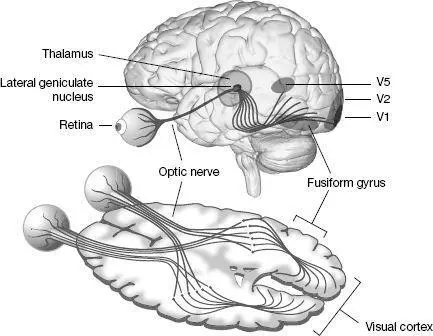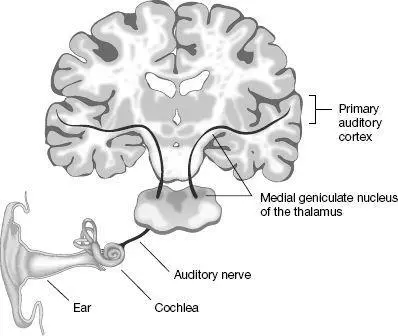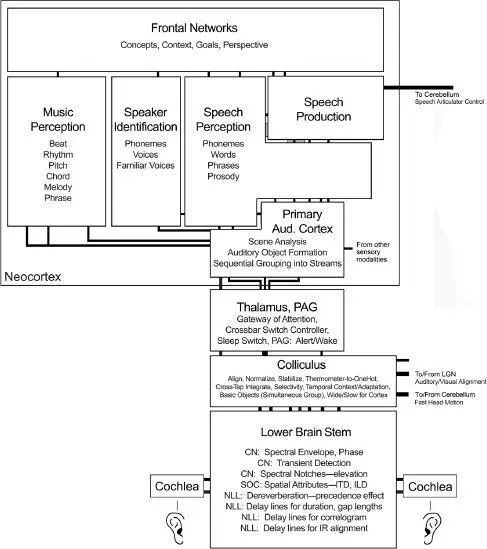The summary above constitutes the conclusions we can draw from the sampling of research results I have shared above as well as the sampling of thought experiments I discussed earlier. I maintain that the model I have presented is the only possible model that satisfies all of the constraints that the research and our thought experiments have established.
Finally, there is one more piece of corroborating evidence. The techniques that we have evolved over the past several decades in the field of artificial intelligence to recognize and intelligently process real-world phenomena (such as human speech and written language) and to understand natural-language documents turn out to be mathematically similar to the model I have presented above. They are also examples of the PRTM. The AI field was not explicitly trying to copy the brain, but it nonetheless arrived at essentially equivalent techniques.
I have an old brain but a terrific memory.
Al Lewis
Here we stand in the middle of this new world with our primitive brain, attuned to the simple cave life, with terrific forces at our disposal, which we are clever enough to release, but whose consequences we cannot comprehend.
Albert Szent-Györgyi
Our old brain—the one we had before we were mammals—has not disappeared. Indeed it still provides much of our motivation in seeking gratification and avoiding danger. These goals are modulated, however, by our neocortex, which dominates the human brain in both mass and activity.
Animals used to live and survive without a neocortex, and indeed all nonmammalian animals continue to do so today. We can view the human neocortex as the great sublimator—thus our primitive motivation to avoid a large predator may be transformed by the neocortex today into completing an assignment to impress our boss; the great hunt may become writing a book on, say, the mind; and pursuing reproduction may become gaining public recognition or decorating your apartment. (Well, this last motivation is not always so hidden.)
The neocortex is likewise good at helping us solve problems because it can accurately model the world, reflecting its true hierarchical nature. But it is the old brain that presents us with those problems. Of course, like any clever bureaucracy, the neocortex often deals with the problems it is assigned by redefining them. On that note, let’s review the information processing in the old brain.
Pictures, propagated by motion along the fibers of the optic nerves in the brain, are the cause of vision.
Isaac Newton
Each of us lives within the universe—the prison—of his own brain. Projecting from it are millions of fragile sensory nerve fibers, in groups uniquely adapted to sample the energetic states of the world around us: heat, light, force, and chemical composition. That is all we ever know of it directly; all else is logical inference.
Vernon Mountcastle 1
Although we experience the illusion of receiving high-resolution images from our eyes, what the optic nerve actually sends to the brain is just a series of outlines and clues about points of interest in our visual field. We then essentially hallucinate the world from cortical memories that interpret a series of movies with very low data rates that arrive in parallel channels. In a study published in Nature , Frank S. Werblin, professor of molecular and cell biology at the University of California at Berkeley, and doctoral student Boton Roska, MD, showed that the optic nerve carries ten to twelve output channels, each of which carries only a small amount of information about a given scene. 2 One group of what are called ganglion cells sends information only about edges (changes in contrast). Another group detects only large areas of uniform color, whereas a third group is sensitive only to the backgrounds behind figures of interest.

The visual pathway in the brain.
“Even though we think we see the world so fully, what we are receiving is really just hints, edges in space and time,” says Werblin. “These 12 pictures of the world constitute all the information we will ever have about what’s out there, and from these 12 pictures, which are so sparse, we reconstruct the richness of the visual world. I’m curious how nature selected these 12 simple movies and how it can be that they are sufficient to provide us with all the information we seem to need.”
This data reduction is what in the AI field we call “sparse coding.” We have found in creating artificial systems that throwing most of the input information away and retaining only the most salient details provides superior results. Otherwise the limited ability to process information in a neocortex (biological or otherwise) gets overwhelmed.

Seven of the twelve low-data-rate “movies” sent by the optic nerve to the brain.
The processing of auditory information from the human cochlea through the subcortical regions and then through the early stages of the neocortex has been meticulously modeled by Lloyd Watts and his research team at Audience, Inc. 3 They have developed research technology that extracts 600 different frequency bands (60 per octave) from sound. This comes much closer to the estimate of 3,000 bands extracted by the human cochlea (compared with commercial speech recognition, which uses only 16 to 32 bands). Using two microphones and its detailed (and high–spectral resolution) model of auditory processing, Audience has created a commercial technology (with somewhat lower spectral resolution than its research system) that effectively removes background noise from conversations. This is now being used in many popular cell phones and is an impressive example of a commercial product based on an understanding of how the human auditory perceptual system is able to focus on one sound source of interest.

The auditory pathway in the brain.
Inputs from the body (estimated at hundreds of megabits per second), including that of nerves from the skin, muscles, organs, and other areas, stream into the upper spinal cord. These messages involve more than just communication about touch; in addition they carry information about temperature, acid levels (for example, lactic acid in muscles), the movement of food through the gastrointestinal tract, and many other signals. This data is processed through the brain stem and midbrain. Key cells called lamina 1 neurons create a map of the body, representing its current state, not unlike the displays used by flight controllers to track airplanes. From here the sensory data heads to a mysterious region called the thalamus, which brings us to our next topic.

A simplified model of auditory processing in both the subcortical areas (areas prior to the neocortex) and the neocortex, created by Audience, Inc. Figure adapted from L. Watts, “Reverse-Engineering the Human Auditory Pathway,” in J. Liu et al. (eds.), WCCI 2012 (Berlin: Springer-Verlag, 2012), p. 49.
Everyone knows what attention is. It is the taking possession by the mind, in clear and vivid form, of one out of what seem several simultaneously possible objects or trains of thought. Focalization, concentration, of consciousness, are of its essence. It implies withdrawal from some things in order to deal effectively with others.
Читать дальше
















